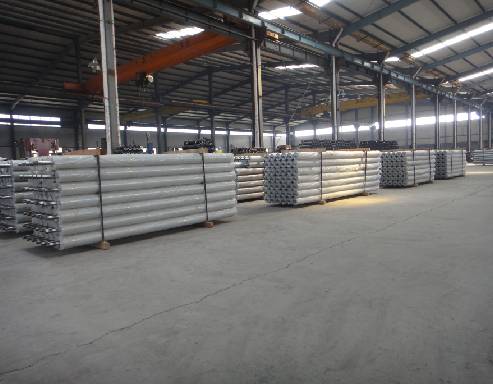 Afrikaans
Afrikaans  Albanian
Albanian  Amharic
Amharic  Arabic
Arabic  Armenian
Armenian  Azerbaijani
Azerbaijani  Basque
Basque  Belarusian
Belarusian  Bengali
Bengali  Bosnian
Bosnian  Bulgarian
Bulgarian  Catalan
Catalan  Cebuano
Cebuano  Corsican
Corsican  Croatian
Croatian  Czech
Czech  Danish
Danish  Dutch
Dutch  English
English  Esperanto
Esperanto  Estonian
Estonian  Finnish
Finnish  French
French  Frisian
Frisian  Galician
Galician  Georgian
Georgian  German
German  Greek
Greek  Gujarati
Gujarati  Haitian Creole
Haitian Creole  hausa
hausa  hawaiian
hawaiian  Hebrew
Hebrew  Hindi
Hindi  Miao
Miao  Hungarian
Hungarian  Icelandic
Icelandic  igbo
igbo  Indonesian
Indonesian  irish
irish  Italian
Italian  Japanese
Japanese  Javanese
Javanese  Kannada
Kannada  kazakh
kazakh  Khmer
Khmer  Rwandese
Rwandese  Korean
Korean  Kurdish
Kurdish  Kyrgyz
Kyrgyz  Lao
Lao  Latin
Latin  Latvian
Latvian  Lithuanian
Lithuanian  Luxembourgish
Luxembourgish  Macedonian
Macedonian  Malgashi
Malgashi  Malay
Malay  Malayalam
Malayalam  Maltese
Maltese  Maori
Maori  Marathi
Marathi  Mongolian
Mongolian  Myanmar
Myanmar  Nepali
Nepali  Norwegian
Norwegian  Norwegian
Norwegian  Occitan
Occitan  Pashto
Pashto  Persian
Persian  Polish
Polish  Portuguese
Portuguese  Punjabi
Punjabi  Romanian
Romanian  Russian
Russian  Samoan
Samoan  Scottish Gaelic
Scottish Gaelic  Serbian
Serbian  Sesotho
Sesotho  Shona
Shona  Sindhi
Sindhi  Sinhala
Sinhala  Slovak
Slovak  Slovenian
Slovenian  Somali
Somali  Spanish
Spanish  Sundanese
Sundanese  Swahili
Swahili  Swedish
Swedish  Tagalog
Tagalog  Tajik
Tajik  Tamil
Tamil  Tatar
Tatar  Telugu
Telugu  Thai
Thai  Turkish
Turkish  Turkmen
Turkmen  Ukrainian
Ukrainian  Urdu
Urdu  Uighur
Uighur  Uzbek
Uzbek  Vietnamese
Vietnamese  Welsh
Welsh  Bantu
Bantu  Yiddish
Yiddish  Yoruba
Yoruba  Zulu
Zulu idler roller types
Understanding Idler Roller Types A Comprehensive Guide
Idler rollers are essential components in various industrial applications, especially in conveyor systems. They play a crucial role in supporting the conveyor belt, ensuring smooth operation, and minimizing wear and tear. The selection of the right type of idler roller is vital to enhance efficiency, reliability, and durability in material handling processes. In this article, we will explore different types of idler rollers, their features, and applications.
1. Flat Idler Rollers
Flat idler rollers are one of the most common types used in conveyor systems. They feature a cylindrical shape with a flat surface that provides a supportive base for the conveyor belt. These rollers are often used in light to moderate load applications and can be made from various materials, including steel, plastic, and rubber. Flat idler rollers help to maintain belt alignment and reduce the risk of slippage, ensuring that the materials are transported smoothly.
2. Crowned Idler Rollers
Crowned idler rollers are designed with a slightly raised center that tapers off towards the edges. This unique design helps to keep the conveyor belt centered, preventing it from drifting off to one side. Crowned rollers are ideal for applications where belt tracking is critical, such as in long conveyor systems or when handling small and loose materials. The crowned shape allows for better control of the belt movement, which ultimately enhances the overall performance of the conveyor system.
Troughing idler rollers are specifically designed to support the conveyor belt in a trough shape, creating a cradle-like structure. This design is particularly useful for carrying bulk materials, as it helps to contain the material and minimizes spillage. Troughing idlers are commonly used in industries such as mining, agriculture, and construction. They come in various angles, usually 20°, 30°, or 45°, depending on the application requirements. The troughing action significantly improves material handling efficiency by increasing load-carrying capacity.
idler roller types

4. Return Idler Rollers
Return idler rollers are utilized on the return side of the conveyor belt, supporting the belt as it returns to the feeding point. These rollers are typically designed to be flat, ensuring that the belt maintains its shape while moving back to pick up more materials. The return idlers help reduce friction between the belt and the frame, contributing to a longer lifespan for both the belt and the idlers themselves. They are essential in minimizing energy consumption during the return trip of the belt.
5. Greasable Idler Rollers
Greasable idler rollers come with a built-in lubrication system that allows for easy maintenance. Regular lubrication is crucial since it reduces friction and heat, thus prolonging the life of the rollers. These idlers are often used in environments where there is a high frequency of use or where the rollers are exposed to harsh conditions. The ability to grease the rollers easily helps to maintain consistent performance and avoids costly downtimes due to component failure.
6. Heavy-Duty Idler Rollers
Heavy-duty idler rollers are designed to withstand extremely tough conditions, making them ideal for industries with high loads or abrasive materials. These rollers are constructed from reinforced materials that can endure significant stress and wear. They are commonly found in mining operations, steel production, and heavy construction where the durability and reliability of components are paramount.
Conclusion
Understanding the different types of idler rollers is essential for anyone involved in the design, maintenance, or operation of conveyor systems. Selecting the appropriate idler roller type based on the application can lead to significant improvements in efficiency, reliability, and longevity of equipment. By considering factors such as load capacity, material being transported, and environmental conditions, companies can enhance productivity and reduce operational costs. Investing in the right idler roller will inevitably lead to superior performance in modern material handling systems.
-
Revolutionizing Conveyor Reliability with Advanced Rubber Lagging PulleysNewsJul.22,2025
-
Powering Precision and Durability with Expert Manufacturers of Conveyor ComponentsNewsJul.22,2025
-
Optimizing Conveyor Systems with Advanced Conveyor AccessoriesNewsJul.22,2025
-
Maximize Conveyor Efficiency with Quality Conveyor Idler PulleysNewsJul.22,2025
-
Future-Proof Your Conveyor System with High-Performance Polyurethane RollerNewsJul.22,2025
-
Driving Efficiency Forward with Quality Idlers and RollersNewsJul.22,2025





























